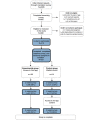Smartphone App to Address Loneliness Among College Students: Pilot Randomized Controlled Trial
- PMID: 33079071
- PMCID: PMC7609198
- DOI: 10.2196/21496
Smartphone App to Address Loneliness Among College Students: Pilot Randomized Controlled Trial
Abstract
Background: Loneliness is a widespread and significant problem on college campuses. Prolonged loneliness in young adulthood is a risk factor for concurrent and future mental health problems and attrition, making college a critical time for support. Cognitive and behavioral interventions show promise for decreasing loneliness and can be widely disseminated through technology.
Objective: This pilot randomized controlled trial was conducted to examine the initial efficacy, feasibility, and desirability of a smartphone app, Nod, designed to deliver cognitive and behavioral skill-building exercises to reduce loneliness during the transition to college.
Methods: First-year college students (N=221, mean age 18.7 years, 59% female) were recruited online during incoming student orientation, and randomized to either receive immediate access to Nod (experimental group, n=100) or access after 4 weeks (control group, n=121). The app delivered skills via fully automated (1) "social challenges," suggested activities designed to build social connections; (2) reflections, brief cognitive reframing exercises; and (3) student testimonials that encouraged a growth mindset toward social connection building. Main intention-to-treat analyses were used to compare the conditions on self-assessed loneliness, depressive symptoms, and other mental health and college adjustment outcomes at week 4, controlling for baseline values on those variables. Analyses were also performed to test the hypothesis that the treatment benefits would be particularly pronounced for participants with heightened psychological vulnerability at baseline (ie, higher baseline depressive symptoms and loneliness).
Results: Retention was 97% at week 4, and participants viewed an average 36.7 pages of app content. There were no significant condition differences in loneliness at week 4 (F1, 211=0.05, P=.82; ηp2 <.001). However, there was a significant condition-by-baseline depression interaction to predict week-4 loneliness (F1,209=9.65, P=.002; ηp2 =.04). Simple slope analyses indicated that baseline depression positively predicted week-4 loneliness among control participants (r=0.30, t209=3.81, P<.001), but not among experimental participants (r=-0.09, t209=-0.84, P=.40), suggesting that Nod buffered participants with high baseline depression scores from experiencing heightened midquarter loneliness. Similarly, there were no significant condition differences in other week-4 outcomes. However, moderation by baseline vulnerability was found for week-4 depressive symptoms, sleep quality, and indices of college adjustment (eg, perceived social support and campus belonging).
Conclusions: Although Nod exposure did not impact outcomes for the full sample, these results provide initial evidence of its benefit for vulnerable students. The results of this trial suggest that cognitive and behavioral skills delivered via a mobile app can buffer psychologically vulnerable college students against heightened loneliness and depressive symptoms, as well as other negative college adjustment outcomes. Future work will aim to improve upon app engagement, and to address loneliness among other key populations.
Trial registration: ClinicalTrials.gov NCT04164654; https://clinicaltrials.gov/ct2/show/NCT04164654.
Keywords: app; college; desirability; efficacy; feasibility; loneliness; mental health; randomized controlled trial; smartphone app; student; young adult.
©Emma Bruehlman-Senecal, Cayce J Hook, Jennifer H Pfeifer, Caroline FitzGerald, Brittany Davis, Kevin L Delucchi, Jana Haritatos, Danielle E Ramo. Originally published in JMIR Mental Health (http://mental.jmir.org), 20.10.2020.
Conflict of interest statement
Conflicts of Interest: Nod is a mobile app co-developed by Grit Digital Health and Hopelab. While both organizations own rights to the Nod product, Grit Digital Health is solely responsible for the commercial operation and distribution of Nod. As co-owner, Hopelab receives a limited portion of Nod sale net proceeds. The research reported here as well as the development of Nod were supported by the nonprofit Hopelab Foundation. Hopelab develops behavioral interventions to improve the health and well-being of young people. The design, conduct, analysis, and reporting of this study represent a scientific collaboration between Hopelab, JP, and BD at the University of Oregon, and KD at the University of California, San Francisco and Weill Institute for Neurosciences. EB-S, CJH, CF, JH, and DER are employed by Hopelab Foundation. The study sponsor was involved in the study design, collection, analysis, and interpretation of data; writing of the article; and decision to submit it for publication.
Figures


References
-
- Perlman D, Peplau LA. Toward a Social Psychology of Loneliness. In: Duck S, Gilmour R, editors. Personal Relationships in Disorder. London: Academic Press; 1981. pp. 31–56.
-
- Cacioppo JT, Hawkley LC. Perceived social isolation and cognition. Trends Cogn Sci. 2009 Oct;13(10):447–454. doi: 10.1016/j.tics.2009.06.005. http://europepmc.org/abstract/MED/19726219 - DOI - PMC - PubMed
Associated data
Grants and funding
LinkOut - more resources
Full Text Sources
Medical

